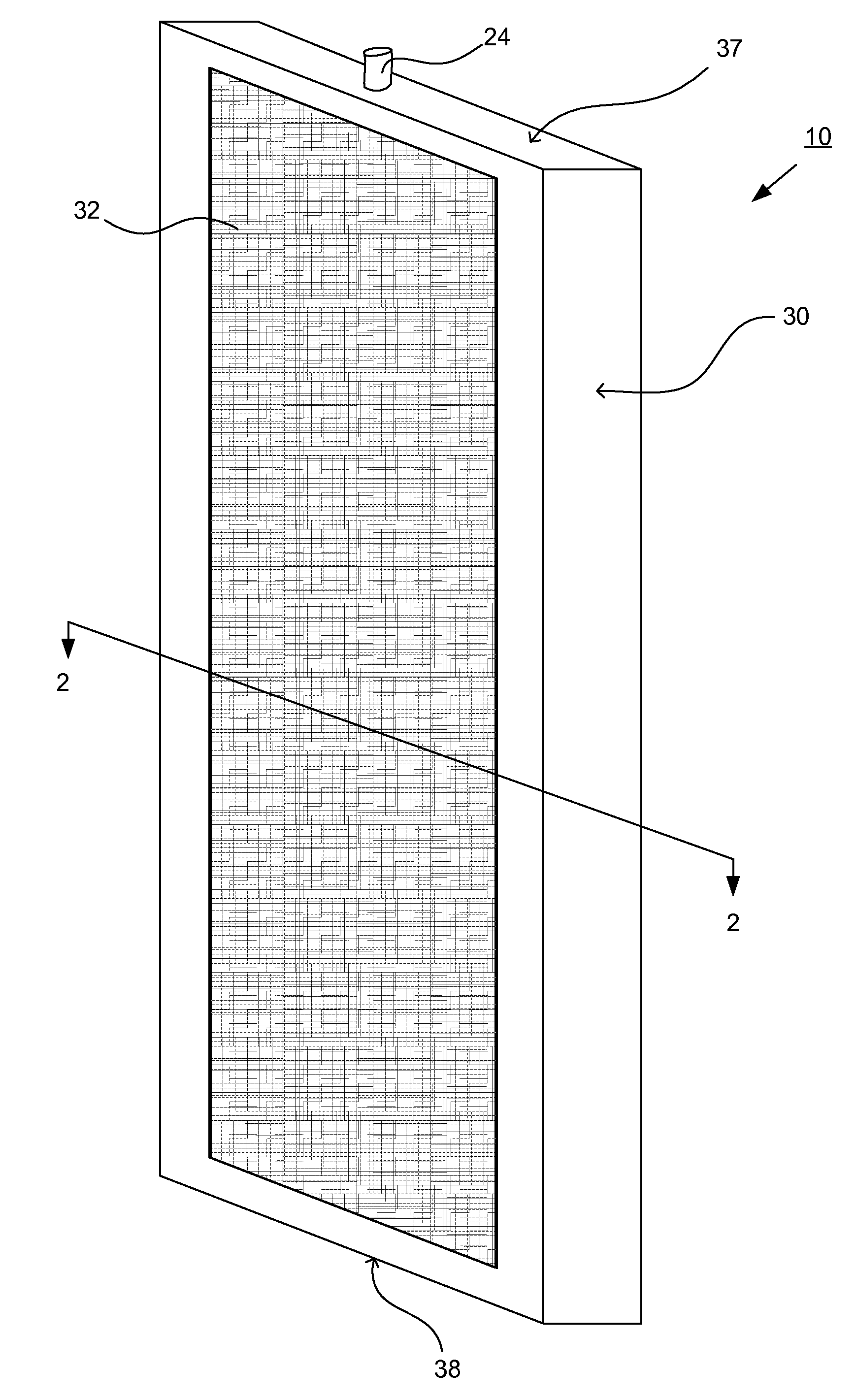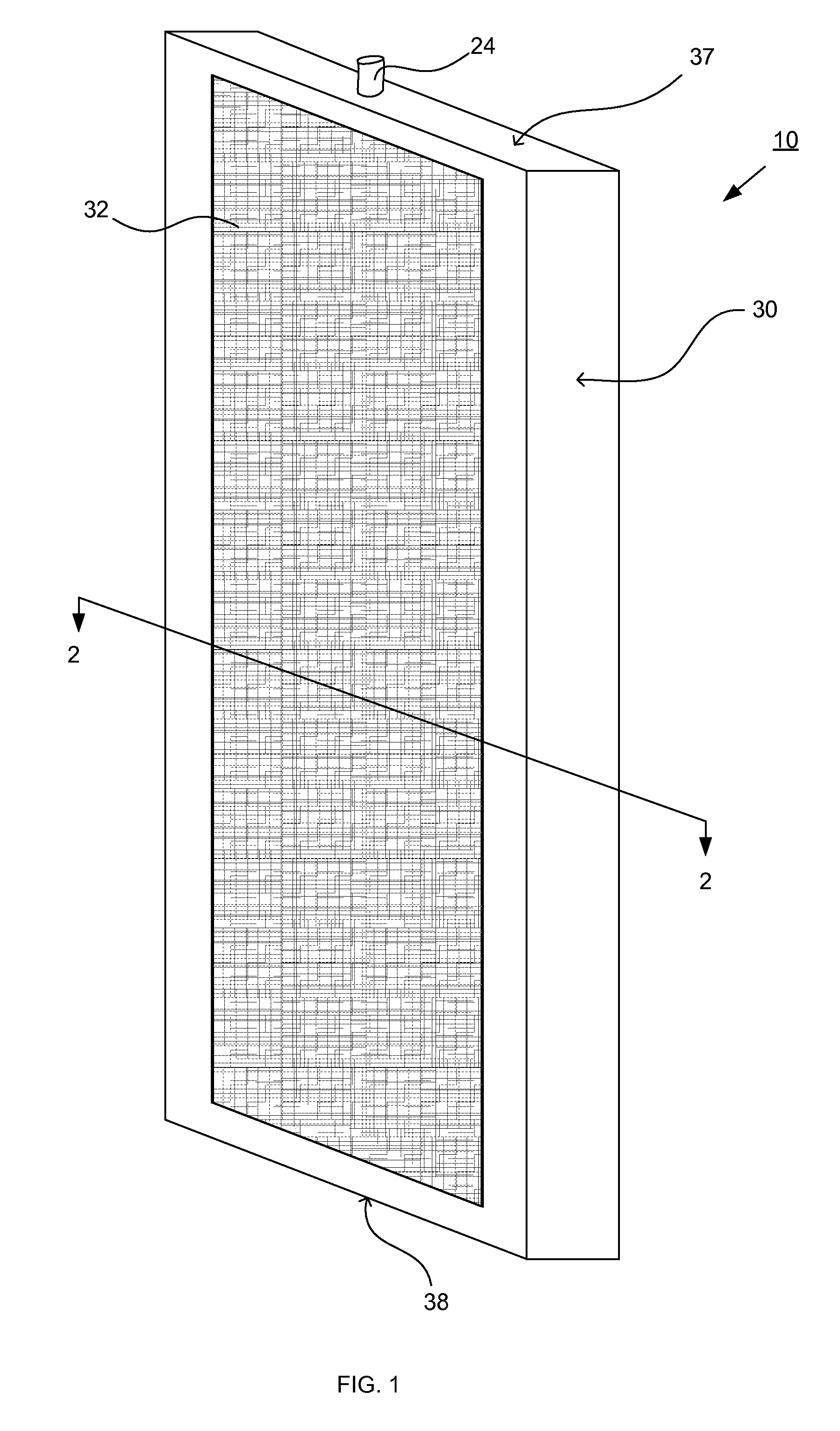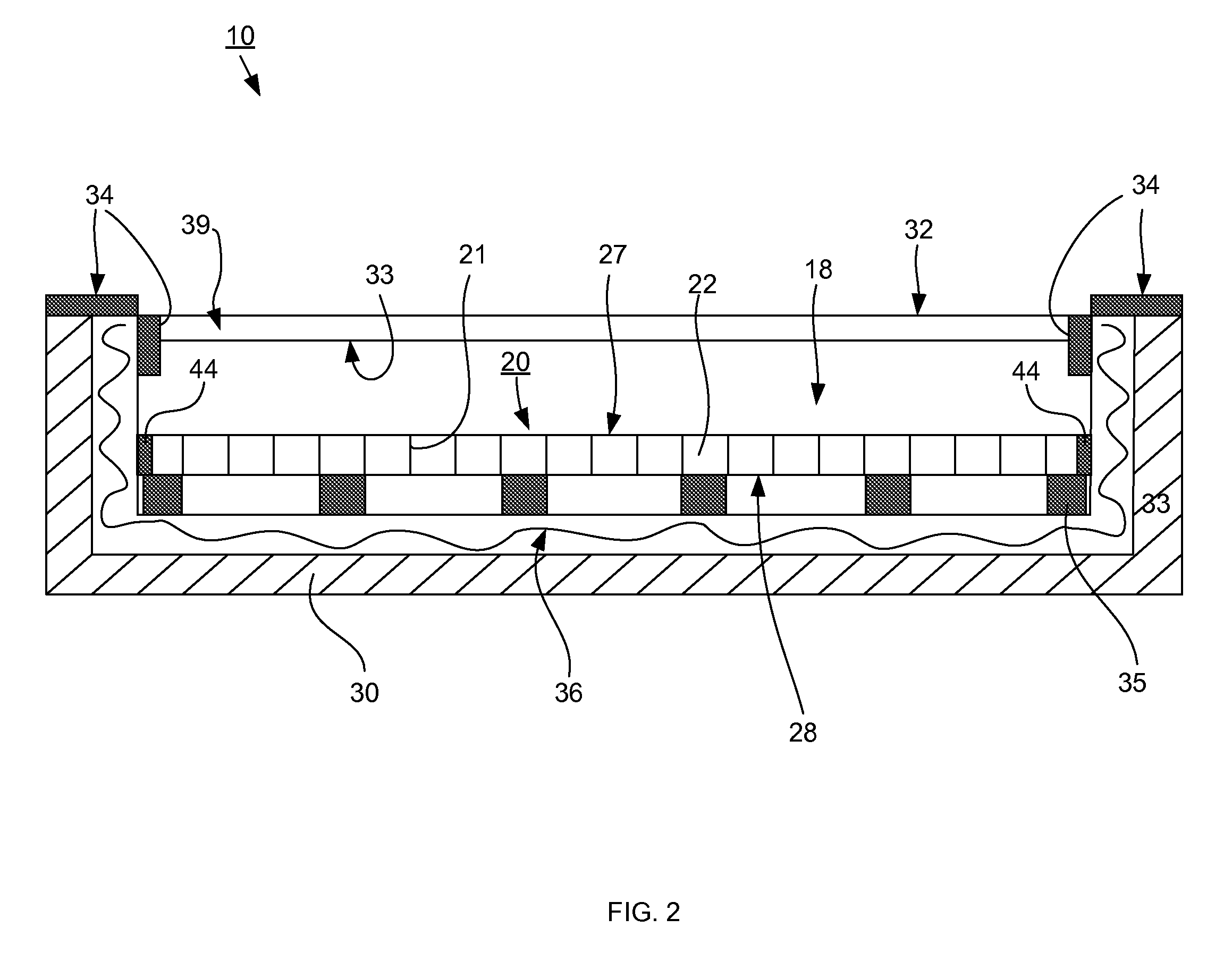System for solar heating water using a glass absorber
a solar energy and absorber technology, applied in the field of absorbers, can solve the problems of consuming hot water, damage or destroying the delicate collector, and the passive water heater is generally less structurally sophisticated, and achieves the effects of facilitating the capture of solar energy, facilitating the movement of hot water, and being convenient to install
- Summary
- Abstract
- Description
- Claims
- Application Information
AI Technical Summary
Benefits of technology
Problems solved by technology
Method used
Image
Examples
Embodiment Construction
[0025]In the following description, like reference characters designate like or corresponding parts throughout several views.
[0026]Referring now to the drawings in general and FIG. 1 in particular, it will be understood that the illustrations are for the purpose of describing a preferred embodiment of the invention and are not intended to limit the invention thereto. As best seen in FIG. 1, system 10 includes housing 30 with housing top portion 37 oriented upwardly and housing bottom portion 38 oriented downwardly. This orientation coincides with how system 10 is intended to be mounted in situ, for example on a slanted roof, although nearly horizontal mounting would also work so long as outlet 45 is oriented on absorber upper portion 25 and inlet 40 is oriented on absorber lower portion 26, as shown in FIG. 6. Outlet sleeve 24 preferably extends through housing top portion 37. The preferred size of system 10 is approximately 4′×8′×8″.
[0027]FIG. 2 is a not-to-scale cross-sectional vi...
PUM
| Property | Measurement | Unit |
|---|---|---|
| thick | aaaaa | aaaaa |
| transparency | aaaaa | aaaaa |
| thick | aaaaa | aaaaa |
Abstract
Description
Claims
Application Information
 Login to View More
Login to View More - R&D
- Intellectual Property
- Life Sciences
- Materials
- Tech Scout
- Unparalleled Data Quality
- Higher Quality Content
- 60% Fewer Hallucinations
Browse by: Latest US Patents, China's latest patents, Technical Efficacy Thesaurus, Application Domain, Technology Topic, Popular Technical Reports.
© 2025 PatSnap. All rights reserved.Legal|Privacy policy|Modern Slavery Act Transparency Statement|Sitemap|About US| Contact US: help@patsnap.com



